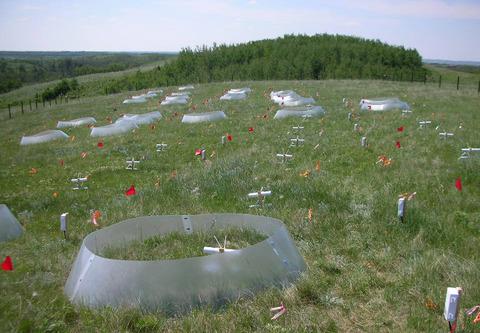当前位置:
X-MOL 学术
›
Funct. Ecol.
›
论文详情
Our official English website, www.x-mol.net, welcomes your feedback! (Note: you will need to create a separate account there.)
Climate change and defoliation interact to affect root length across northern temperate grasslands
Functional Ecology ( IF 5.2 ) Pub Date : 2020-08-28 , DOI: 10.1111/1365-2435.13669 Zilong Ma 1 , Scott X. Chang 1 , Edward W. Bork 2 , Diego F. Steinaker 3 , Scott D. Wilson 3 , Shannon R. White 4 , James F. Cahill 4
中文翻译:

气候变化和落叶影响了北部温带草原的根系长度
更新日期:2020-08-28
Functional Ecology ( IF 5.2 ) Pub Date : 2020-08-28 , DOI: 10.1111/1365-2435.13669 Zilong Ma 1 , Scott X. Chang 1 , Edward W. Bork 2 , Diego F. Steinaker 3 , Scott D. Wilson 3 , Shannon R. White 4 , James F. Cahill 4
Affiliation

|
- Grassland plants, especially their root systems, are dynamic and can buffer changes resulting from exposure to multiple stressors; however, the interactive stressor effects on root dynamics and associated above‐ground growth are poorly understood.
- Here, we examine the effects of changed precipitation and air temperature, and defoliation intensity on root length dynamics and above‐ground biomass using the third year data from a multifactor experiment conducted across three northern temperate grasslands.
- We found that root length was more sensitive to the changes in environmental and management conditions than root mass, demonstrating the importance of root length as an indicator of rapid root system changes. Across all sites, warming, altered precipitation and defoliation intensity interacted to affect root length while above‐ground biomass was only affected by defoliation intensity, indicating that the root system was more responsive than above‐ground biomass when climatic conditions change. Overall, drought reduced root length, particularly under low defoliation intensity, as well as in combination with warming and heavy defoliation, highlighting the risk of additive effects of such environmental stresses. Across unclipped plots, above‐ground biomass was positively associated with total root length, the latter of which further interacted with precipitation, to affect above‐ground biomass. Compared to defoliated communities, non‐defoliated plant communities exhibited a greater ability to maintain above‐ground biomass under drought conditions via increases in root system efficiency (the amount of above‐ground biomass produced per unit of root length invested).
- Our results highlight the rapid change of root length in the face of interactive stressors. We postulate that the degree of stability in above‐ground biomass is driven by the altered root system dynamics or species turnover. Future studies are warranted that more directly assess how root length responses under climate change impact other important plant traits in grasslands.
中文翻译:

气候变化和落叶影响了北部温带草原的根系长度
- 草原植物,特别是其根系,是动态的,可以缓冲由于暴露于多种胁迫下而引起的变化;然而,人们对交互压力源对根系动力学和相关地上生长的影响了解甚少。
- 在这里,我们使用来自北部三个温带草原的多因子实验的第三年数据,研究了降水和气温变化以及落叶强度对根长动态和地上生物量的影响。
- 我们发现根长比根重对环境和管理条件的变化更敏感,这证明了根长作为快速根系变化指标的重要性。在所有站点上,变暖,降水变化和落叶强度相互影响,从而影响根系长度,而地上生物量仅受落叶强度影响,表明当气候条件发生变化时,根系比地上生物量的反应性强。总体而言,干旱会降低根长,特别是在低落叶强度下,以及与温暖和严重的落叶结合时,都会缩短根长,这突出表明了此类环境胁迫会产生累加效应的风险。在未修剪的土地上,地上生物量与总根长呈正相关,后者进一步与降水相互作用,影响地上生物量。与落叶群落相比,非落叶植物群落表现出更大的能力,可以通过提高根系效率(在单位根长上投入的地上生物量)来维持干旱条件下的地上生物量。
- 我们的结果突出了面对交互压力源时根长的快速变化。我们假设地上生物量的稳定性程度是由改变的根系动力学或物种更新驱动的。有必要进行进一步的研究,以便更直接地评估气候变化下的根长响应如何影响草地上其他重要的植物性状。



























 京公网安备 11010802027423号
京公网安备 11010802027423号